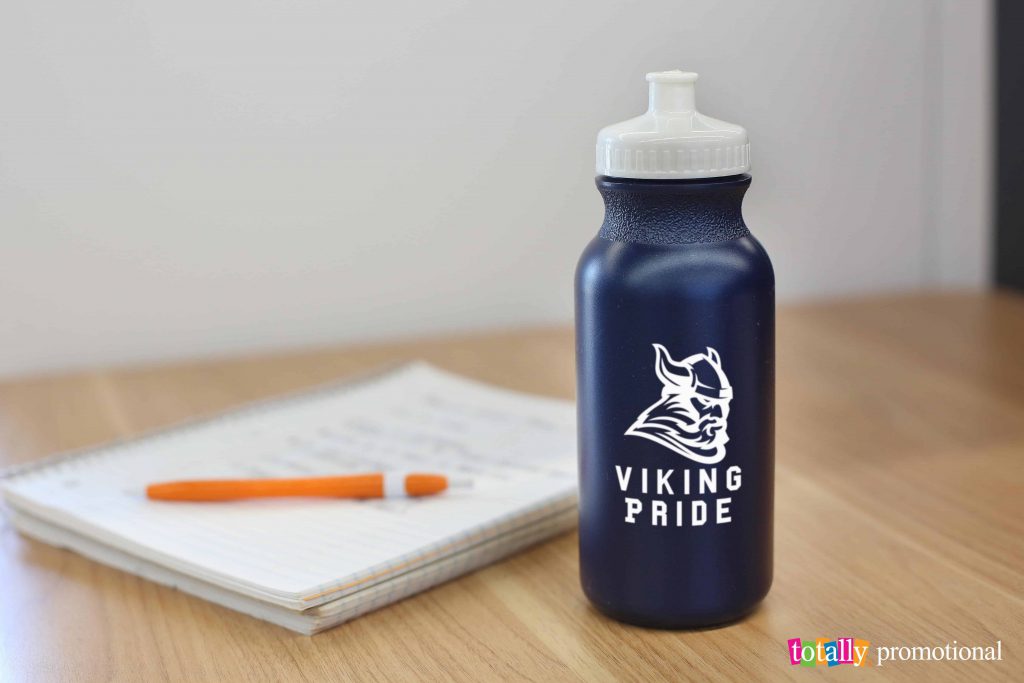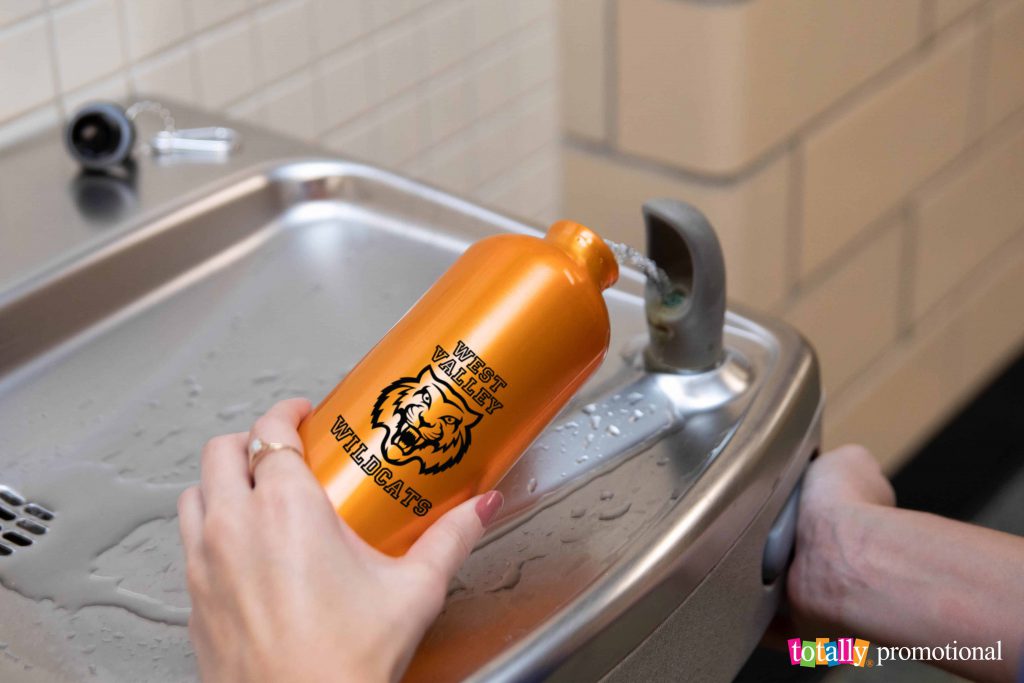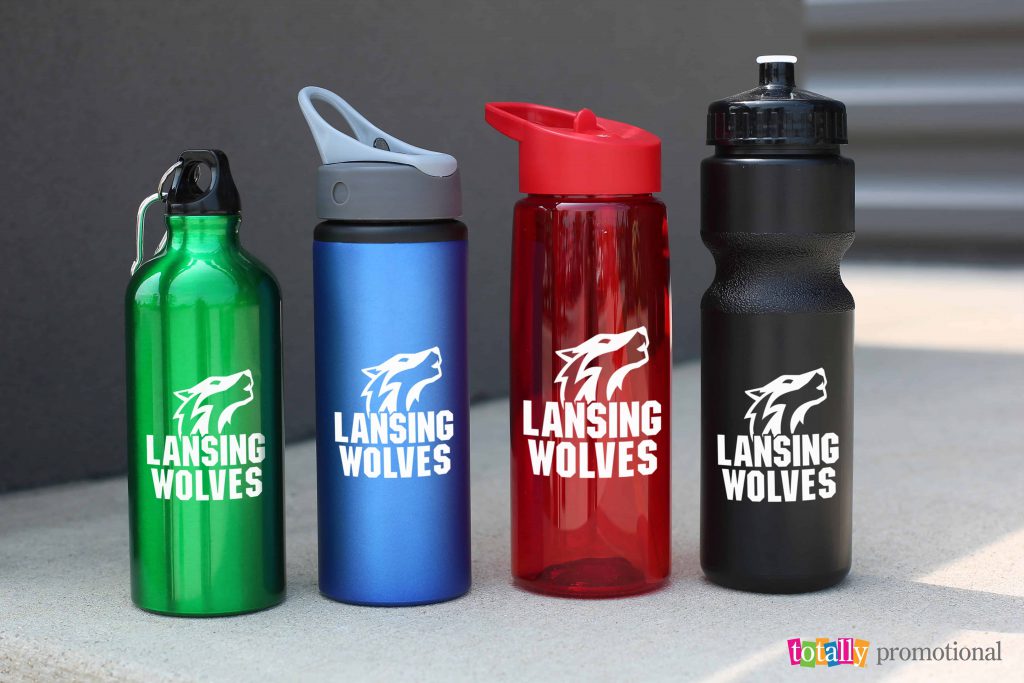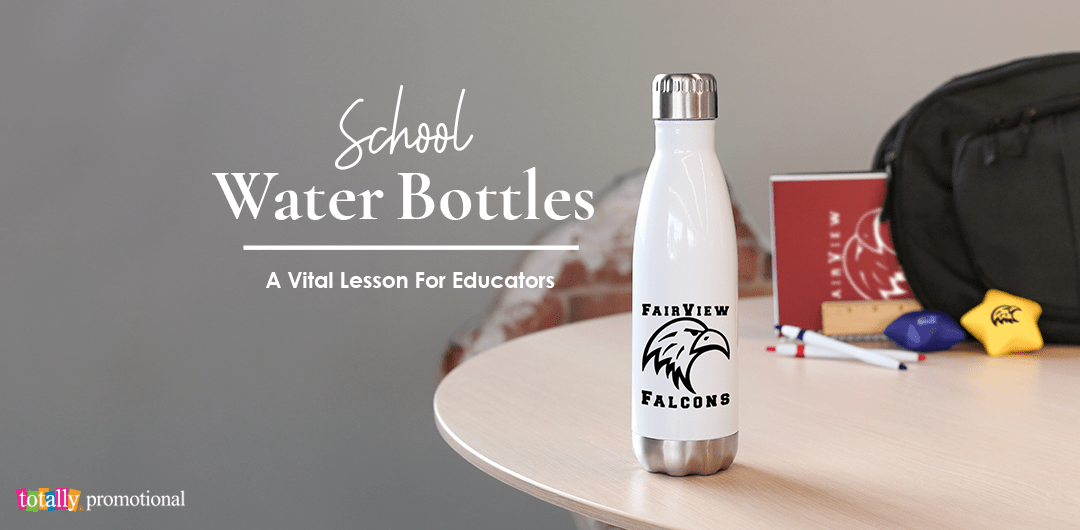H²O and kids’ water bottles are secret weapons for keeping students healthy and focused.
It’s really not a big secret. It’s well-known that keeping children hydrated can enhance learning and improve cognitive function. Students today have a wealth of activities to keep them on the go. But their hydration needs — especially during school hours — are sometimes overlooked.
In recent years, many K-12 school districts have revisited and upgraded their hydration plans to improve student and staff wellness. Many educators have discovered that refillable kids’ water bottles are an affordable answer.
Colorado district adopts school water bottles
Like many others across the U.S., Pueblo County School District 70 had a hydration program in place prior to the pandemic. But when in-class learning returned in late 2020, officials at the Colorado school discussed increasing access by purchasing single-use bottled water.
“The administration wanted to give bottled water to the students but it just wasn’t feasible,” explained Brian Axworthy, the district’s director of nutrition services.
The cost to keep enough bottled water on hand for more than 8,000 students in the district was daunting. Each building already had water fountains or hydration stations where kids could fill bottles while practicing social distancing. However, not all students had their own personal sports bottle.
Axworthy said the district decided to use COVID relief funding to buy more than 10,000 water bottles for students and staff. The school selected Totally Promotional’s popular Blank 28 oz. Translucent Travel Bike Bottles with Flip-Top Lids. The refillable bottles were first used during the 2020-2021 school year.
Water does more than quench kids’ thirst

Axworthy, who serves one of the largest geographical school districts in Colorado, said it’s important to follow the guidance of medical experts when it comes to the benefits of hydration.
“Studies have shown that students remember more and stay focused longer when they are hydrated,” he said. “So, providing a way to keep students hydrated throughout the day is an easy way to help them learn and develop. Providing hydration stations throughout the school and making sure every student has access to a refillable water bottle is far less expensive and cleaner for the environment than providing disposable water bottles or risking the children’s development and learning potential.”
Recognizing the signs of dehydration
Water makes up two-thirds of our bodies. Dehydration occurs when we lose more fluid than we take in. This upsets the balance of minerals and our ability to function properly. Failing to get timely treatment can result in seizures, kidney problems, heat exhaustion or heat stroke, and even death. Risks are higher for athletes and those with chronic illnesses.
Educators and coaches should be trained to recognize the initial symptoms of dehydration:
- Headaches
- Crankiness
- Fatigue and lethargy
- Dizziness
- Excess thirst
- Less frequent urination
- Dark yellow and/or strong-smelling urine
- Dry mouth, lips and eyes
Losing as little as 2 percent of a child’s body weight from dehydration can decrease alertness, slow response time, and affect memory and reasoning. Students who receive adequate hydration are more alert, better focused, and often perform better on tests.
CDC offers hydration training programs

The Centers for Disease Control and Prevention offers schools online educational tools to combat hydration. The guides suggest keeping water fountains clean and properly maintained. They advise giving students adequate access to water fountains, hydration stations and dispensers throughout the school.
The CDC also recommends students be permitted to use refillable water bottles during school hours. In its Increasing Access to Drinking Water in Schools Toolkit: Step-by-Step Guidance on Using the Toolkit, the CDC suggests schools revise policies that currently prevent students from using refillable bottles during class.
Short video training modules are also available from the CDC on how to encourage students to drink more water during the day.
Water access required for lunch/breakfast programs
Making sure children stay hydrated is more than just a good idea. It’s also a requirement for schools participating in the National School Lunch Program and School Breakfast Program. Districts enrolled in these U.S. Department of Agriculture programs are required to make drinking water available for free when food is served in the cafeteria.
Schools have the option of making pitchers of water available or having convenient access to water fountains or hydration stations.

The Totally Promotional team is ready to help you find the best water bottles for kids at your school.
Plastic water bottles, BPA-free water bottles and metal water bottles are our most popular styles!
Browse our entire selection of customizable water bottles or chat with our experts today!
Resources for further reading:



